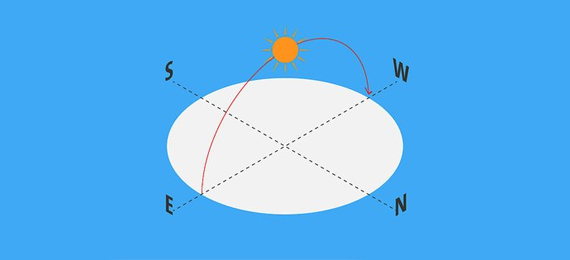
During ancient times, people used to predict directions based on the sun. Though we have modern equipment tell the exact direction, it is always great to know about the ancient day GPS, the sun. Especially, people who travel might wonder how to navigate by the sun. In this article, we will discuss how to find directions based on the sun/ how to tell direction without a compass.
How to Tell Direction Using the Sun
The best time to perform this experiment is during the mornings.
The sun usually moves through the sky from the east to the west, this is due to the position of the earth and its motion. But there are several other factors that help determine the direction including the time of the year. But there is an exception to the rule that the sun changes between the horizons of the sky. The extreme positions of both poles on the earth create long seasons of darkness and light, with the sun being absent in some places for around six months.
We Can Find the Directions Using the Shadow Cast of the Sun.
- A. True
- B. False
What Season Is It?
Earth spins on its axis West to East and also tilts towards and away from the sun. This creates a difference in temperature that will eventually lead to seasonal changes. This can also affect the position of the sun, therefore if you know the season, you can predict more accurately by just the movement of the sun.
- In winter, the sun rises in the southeast part of the sky. It travels through the southeastern sky throughout the day, later sets behind the southwestern horizon.
- In summer, the sun rises in the northeast horizon and travels through the northeastern sky into the northwestern half and finally sets behind the northwestern horizon.
- In spring and fall, the sun rises in the east and sets in the west.
Finding East:
In spring, the sun rises roughly in the east, face this direction.
- But in order to find the accurate position of East in summer, you must adjust a little to the left and in winter, a little to the left.
- If you are in the middle of summer or winter, you must adjust more to the right and left, respectively.
Finding West:
Usually, east and west are distributed opposite to each other, similarly north and south are. Now that you are facing the exact-east, you now know that the direction opposite to you is west.
Finding North and South:
You must still be facing the south now. At the 90 degrees left from where you stand, you can find the north. 90 degrees is nothing but an exact L to the left from the position you stand. At the point, east is in your right and west is in your left. You can find south right behind the place you stand(the exact opposite of where you are positioned).
In order to remember this, you can either visualize it in your mind or can draw lines on the ground to remember. If you do so, you can get a plus sign with four points, each representing one of the cardinal directions.
Determining Directions Using Shadow
Another way to find directions is by using the shadow of the sun
- You will need a long, straight object like a stick, rod, or a ski pole). Insert the object into the ground at 90 degrees.
- Now mark the exact point where the shadow ends using a pebble.
- Wait for a period of 15 to 20 minutes allowing the shadow to move.
- Again, mark the new place where the shadow has moved using a pebble.
- Draw a line from the start and endpoint of the shadow’s movement.
- This line indicates west in the direction of your first mark and east in the direction of your second mark.
- If your left shoulder is pointing the west and the right shoulder is pointing the east, it means you are facing the north and right behind you is the south.